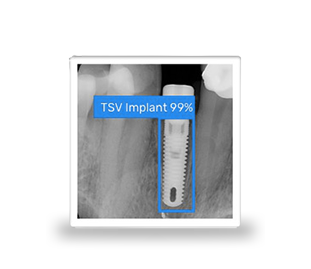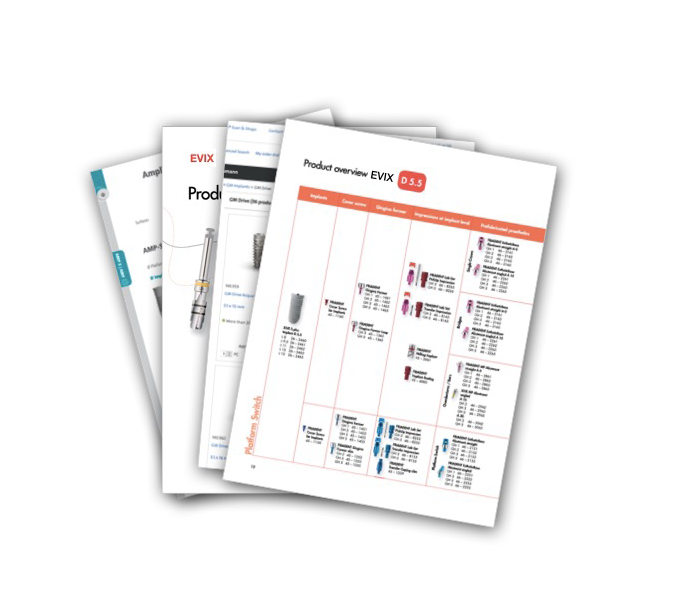What implant is that?
The best tips for identifying an unknown implant!Feb. 16, 2021
More and more frequently, dentists who have to perform prosthetic restoration on implants are confronted with patients who have been treated outside their practice. Medical tourism, globalization, or a simple change of a referring dentist accentuate this phenomenon.
While there are hundreds of brands and thousands of references on the market, it is rare that patients keep the reference of their implant. However, an implant restoration cannot be properly performed without knowing exactly which implant system it is precisely.
(1) 80% of practitioners report that they have already encountered an identification problem regarding their patient's implant. Indeed, it is common to wonder what implant is that!
Spotimplant.com was created to provide dentists with a concrete solution for implant identification by centralizing and classifying information about all dental implants on the market.
In this article, we discuss the best way to determine the reference of an unknown dental implant, allowing the practitioner to provide good quality care.
Step 1: Acquire a Radiograph of the Unknown Implant
The starting point is usually a clear and orthogonal radiograph that captures the dental implant from its head to its apex. To allow accurate identification of its characteristics, it is preferable to take a retro-alveolar radiograph.
Step 2: Clinical Examination
A clinical examination to observe the intraoral elements is very important as it provides valuable information on the technical characteristics of the prosthetic parts (type of connection, prosthetic screw, abutment interface, etc.). Subsequently, a detailed image (with a traditional camera) is required. This information supports the search for identification.
Step 3: Using a Dental Implant Database to Find the Match
Spotimplant provides dentists with a very complete implant database to perform a match between the unknown implant and already referenced models.
In order to refine the correspondence between implants, it is possible to filter the search by the parameters observed on the radiograph (implant type, burial level, connection type, head shape, body shape, body thread, apex shape, apex hole, apex grooves), but also by country and year of fitting on the patient.
This picture defines the technical characteristics that can be observed on a dental implant:

Learn how to better characterize your implants using the sections provided at this link: How to determine the technical characteristics of a dental implant?
After filtering, simply browse through the remaining implant references and visually compare them to the patient's radiograph. An identification by elimination is thus possible.
If you click on the implant you think you have identified, you will get all the additional information: the brand, all the technical characteristics, the dimensions, the compatible instruments (screwdrivers, etc.)... Knowing this information makes it possible to order compatible parts and perform precise operations on the patient's implant.
However, this method is not always satisfactory. The practitioner may not be satisfied with the match found and may wish to seek a second expert opinion. This leads us to step 4.
Step 4: Inability to Find the Final Match
Despite efforts to identify the technical characteristics and filter the search, you may have doubts about the result and wonder: what is this implant really?
In this context, Spotimplant has developed an automatic identification tool based on artificial intelligence. Starting from a simple X-ray image, the algorithm allows calculating the similarities between the radiography of the unknown implant and those stored in the largest database of implants, made up of +300 brands, +3500 models, and +5000 manufacturer catalogs.
What is the process to follow for automatically identifying an implant?
The AI-based identification tool is fast and very easy to use!
- Go to the section Implant Identification;
- Download your retro-alveolar radiograph;
- Get an identification report with the most likely matches.
The identification report is re-evaluated by implantology experts before it is sent to the practitioner.
To sum up, When you are wondering whatimplantisthat, this tool will be very useful.
You now hold all the keys to identify any implant system!
(1) A pilot survey on the prevalence of clinical challenges to identify and restore unknown dental implants, Robert Douglas Walter et al., D.D.S. ; Journal of Oral Implantology, Feb 2020.



